Emerald Physics

Emerald Physics makes a point of showing that relatively affordable hi-fi system doesn’t have to compromise on soundstage or dynamics. Especially not dynamics. Their $6000 CS2.3 MK2 speakers were almost over-amped, with EP100.2 amps ($2200) separately driving the bass sections and coaxial mid-tweet. These shoe-box sized Class D amps can offer up some surprising authority, and the EP open baffles can offer up a surprisingly full frequency response. Whether or not the sound of digital crossovers, DSP and Class D amps is your bag, the EP room puts them to undisputedly impressive use.
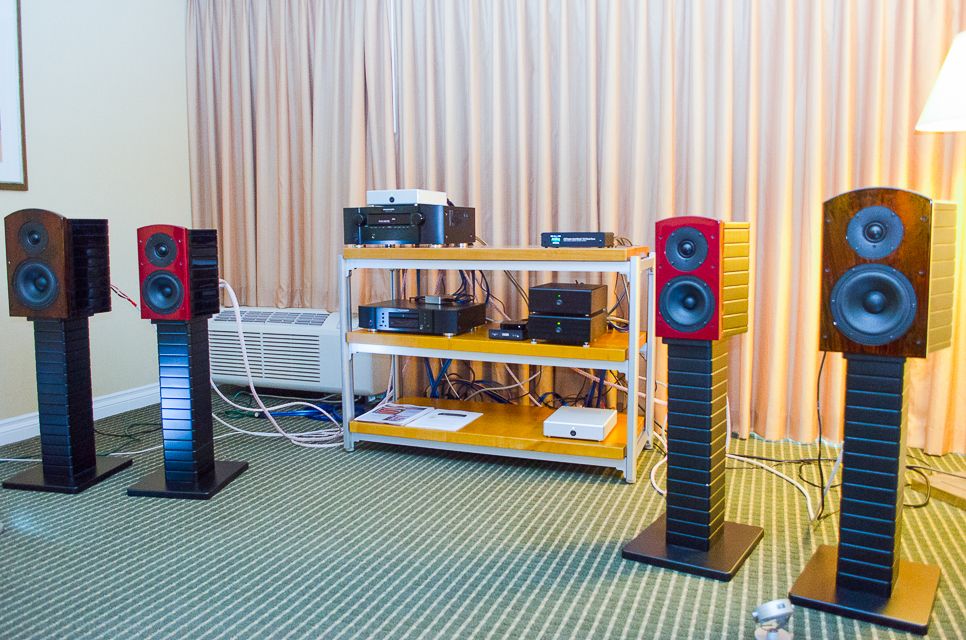
In a second room, DSPeaker DSP and more Emerald Physics amps fronted monitor-style cases in a departure from the EP tradition. The actively crossed M3 monitors ($3000 per pair) each saw a channel of an EP100.2 for an unstoppably authoritative sound with almost none of the lumpiness that plagued so many other Hilton rooms.
Chapman

Chapman Audio was showing some lovely soundstaging and monitor dynamics with real bass. Kirsten may have mentioned how much she loved this room.
Quintessence
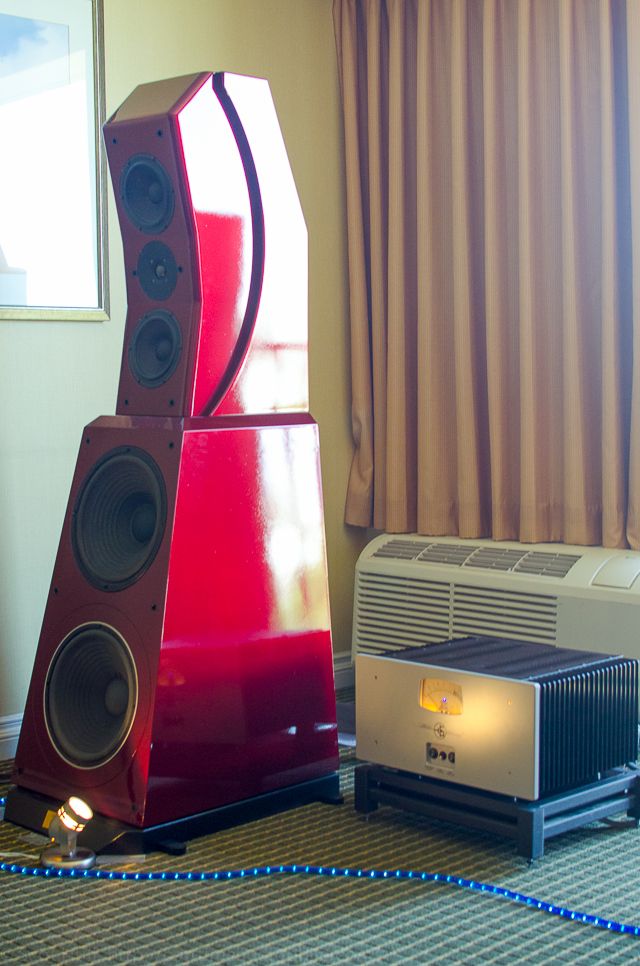
The surprising thing about the Quintessence room is that their new speaker, enormous as it is, functioned well in the space. A rack full of PBN electronics provided the juice here.
PBN

PBN’s $15,000 Liberty Speakers were paired with a Maker Audio G9 amplifier ($4500) for a surprisingly grain free presentation in this room. The front end was all PBN, with their PX phono preamplifier, LX linestage, DX DAC and custom GrooveMaster turntable.
Affordable Audio / King Sound

Beatis Audio and a Triode Corp handled the digital front end and preamplification duties, while the analog front end had an EAR 834p, a Phasemotion PP-300 cartridge ($1650) and the unbelievably gorgeous Transrotor Dark Star turntable ($5000).
KingSound has been showing with tube amps lately, but the Wells Audio Innamorata ($6500) left no doubt that the 48hz spec on the Prince III electrostats ($10,000 ) was real. It was able to pump enough juice to see 100db-plus in room peaks with no loss of composure. This was a special pairing.
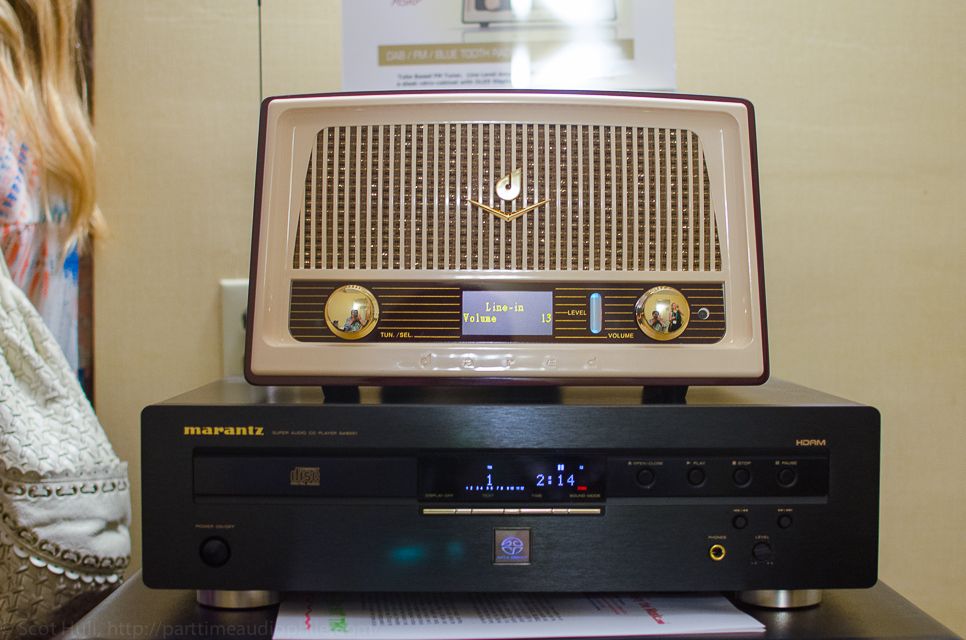
Dared‘s tempting $799 RD-2 retro-radio was on display by the door. The retro looks don’t hint at the bluetooth receiver hidden inside that will let you stream your own music to this thing when the local FM gets a little dodgy.
KT Audio Imports
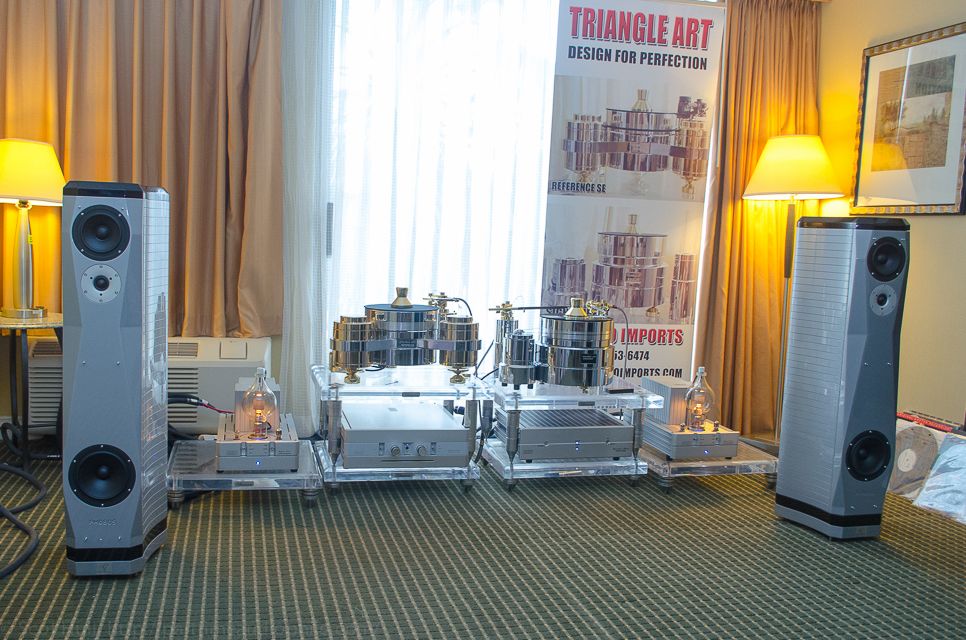
Every person who walked through the door into this room had their jaw drop and a look of pure avarice on their face. KT Audio Imports makes an impression with their room, and not just with looks.
The imposing Eventus Audio Phobos speakers ($19,500 per pair) seem to offer minimal box coloration and an even response down to the low 40s. Driven here by NAT electronics, the sound was smooth, powerful, and lightning fast.
As for those electronics, the setup used the $9500 Signature Phono preamp and the $17,400 Magnetostat preamplifier to feed the utterly ridiculous — and utterly awesome — Magma amplifiers. At $45k per pair, these use a 6H30pi to drive an enormous 450TH transmitter tube for 160 watts of single ended triode power. One hundred sixty watts. Even the 89db sensitive Phobos speakers will give way to that.
Triangle Art’s unsubtle Signature Turntable ($12,500) and Reference SE Turntable ($20,000) completed the picture of stunning industrial art.
Lawrence Audio

This was a room that saw repeat visits. The Lawrence Audio Cello speakers ($18,0000 per pair) were anchoring the system for most of the weekend, and the sound with Jeff Rowland electronics was nothing short of mesmerizing. While these speakers are 49″ tall, they offer the kind of seamless integration that even a die-hard coaxial guy can’t fault. Front-facing AMT tweeters combined with a rear-firing ribbon tweeter for some of the sweetest, fastest, least annoying treble at the show. I may be a little in love.
Later in the weekend, the good folks from Lawrence were kind enough to hook up their more affordable Violin monitors ($7500) so we could hear what stepping down in the line might mean. I’m not going to say that moving from a large 5-way that can dig down to 32hz to a 2-way specced to 32hz is unnoticeable. The integration remains superb, the voicing remains the same, and all the delicacy remains obvious. What you lose is some sense of ease in the treble, some of that air around the soundstage, and a pretty much all the authority that the larger speaker brings to the table.
Had I heard the Violin first, I would have fallen for it. Unfortunately, I heard the Cello, and it clearly betters its stablemate. Given the price, of course, it should.
By the way: all of these things look stunning. They’re substantially more attractive in person than my pictures would leave you to believe.
Wyred4Sound
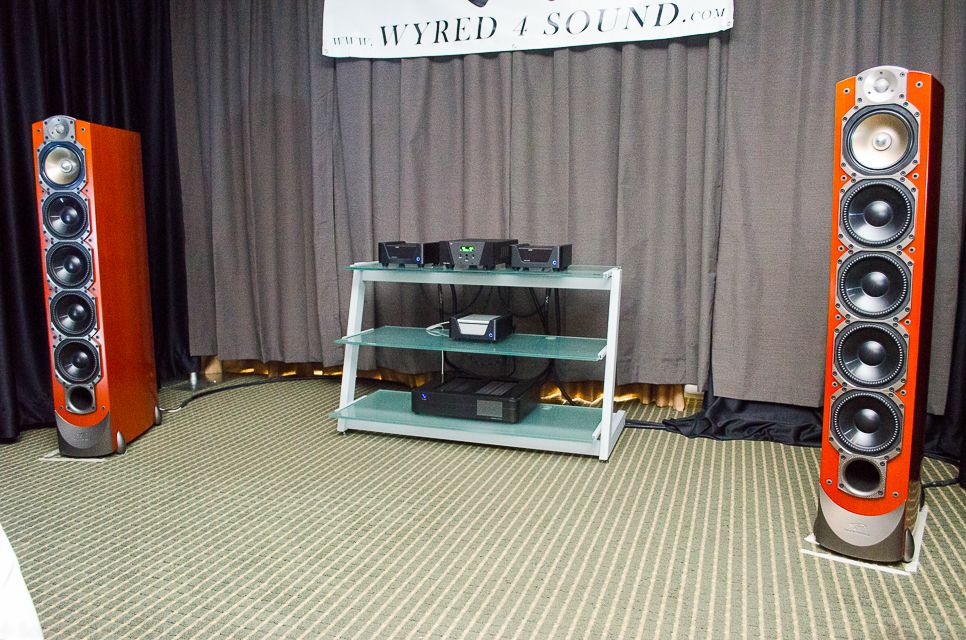
The always dark, always crowded Wyred4Sound demo room was belting out thunderous track after thunderous track all weekend.
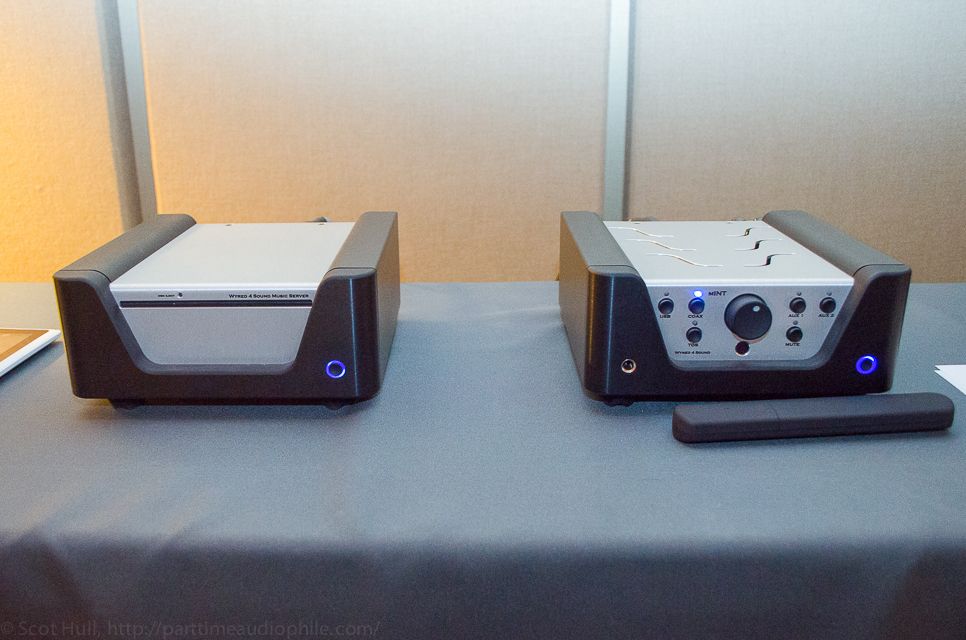
Wyred4Sound’s display room, on the other hand, had this twosome powering a set of Magnepan‘s Minis. The Mini Maggie is a $1500 desktop system that is famous for two things: sounding as good as any Maggie and being just as much of a pain to power as any Maggie. W4S’s mINT solution ($1500) didn’t flinch. With an integrated DAC, an integrated headphone amp, and 100 watts on tap from its 8″ x 8″ box, it seemed like the perfect office mate. The similarly diminutive MS-1 music server (from $2000) made for a tiny, $5000 system that left me wanted surprisingly little.
Cake Audio
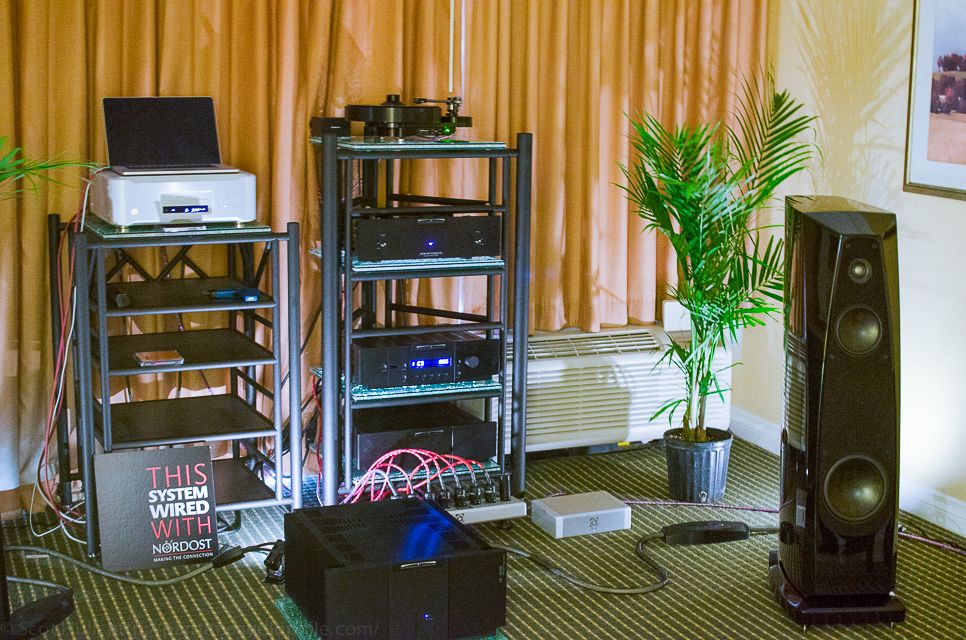
Kirsten touched on Cake Audio a bit in her notes. While the overall tone was slightly dark in this room, this is one of those rooms that demonstrated quite clearly that the high-end has not forgotten what actual music sounds like.
Zesto
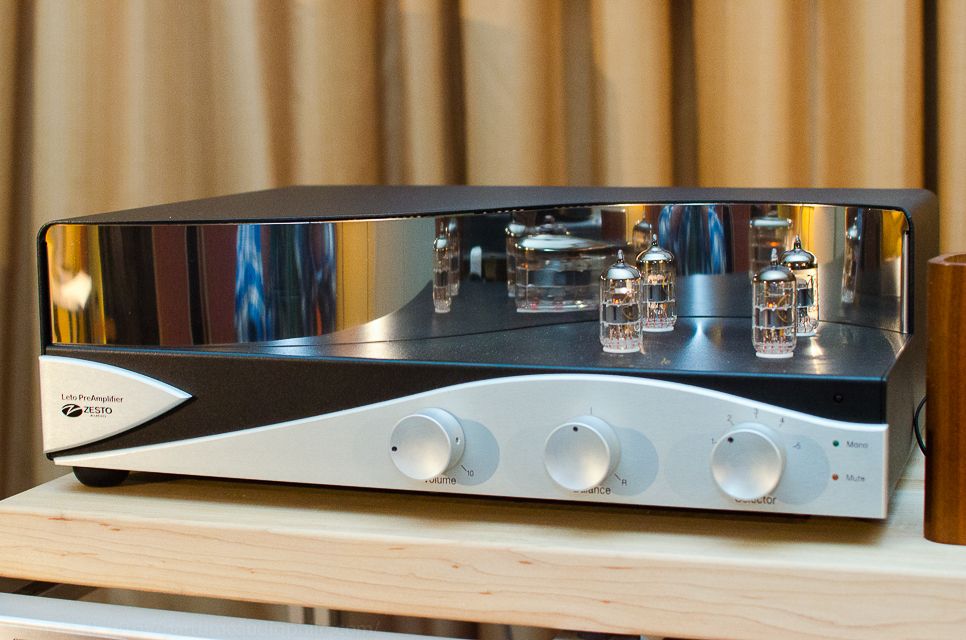
There’s not much I can add to Kirsten’s notes on this room other than a bit of disclosure. This is the room where I accepted my first bribe. Several of the previous rooms had lacked anything resembling air conditioning, and I was drenched in a fairly obvious coating of sweat by the time I stepped into the Zesto room. Carolyn Counnas took one look at me and offered me a bottle of cold water.
Folks, trust me on this: I have been bought. I will never say a bad word about the Zesto people.
Fortunately, I don’t need to. The Andros phono preamp has deservedly become the benchmark in its price class, and the Leto linestage is living up to expectations. Zesto’s house sound seems to err just the tiniest bit to the warm and forgiving side of things, but it still provides more than enough insight into the recordings to keep a person from calling it colored.
This is a company that’s still moving forward rapidly. I’m excited to hear what they come up with next.
Brooks Berdan
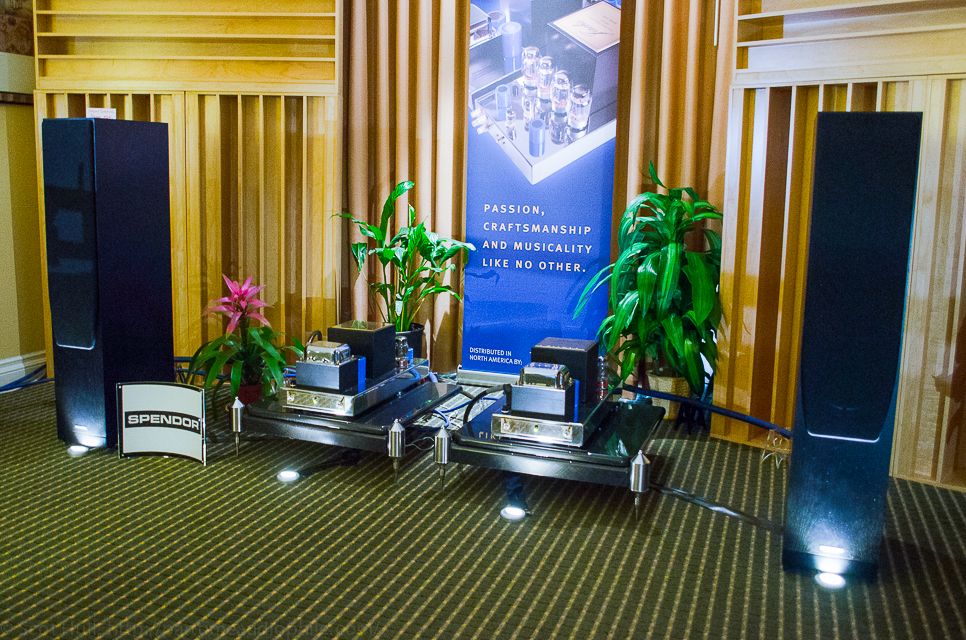
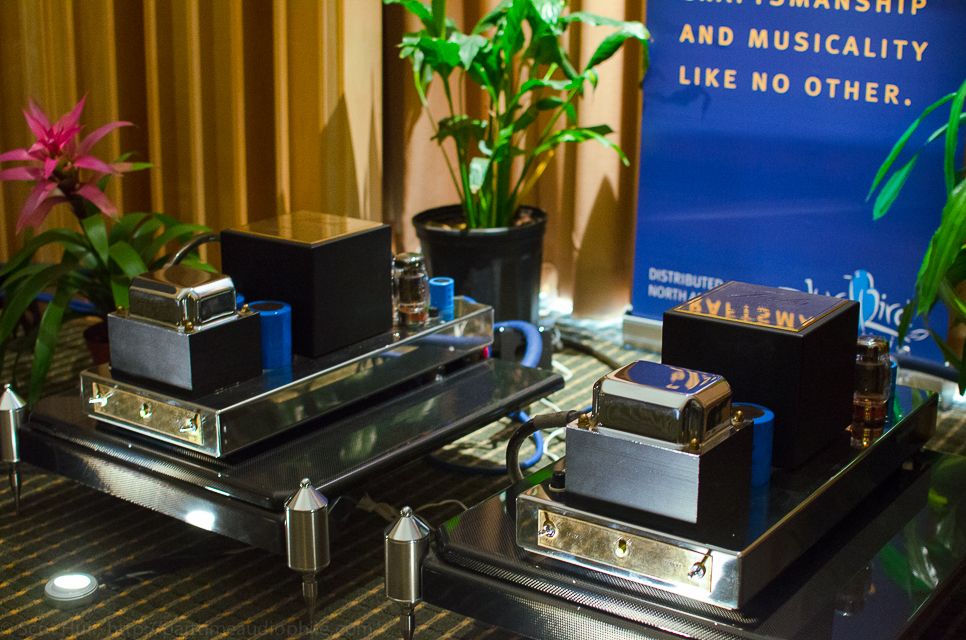
Brooks Berdan‘s lovingly set up room saw a pair of Spendor A9 speakers ($8000 per pair) fronted by an all-Jadis amplification chain. Jadis seems to have fallen a bit off the radar lately, but the sound in this room made me wonder why.
Speaking of the room, the room treatments were effective as well as attractive. The sound was clearly removed from the speakers, the stage presented itself, and the almost omnipresent Hilton boom was barely noticeable. This was skillfully assembled, looked great, and sounded better. More than just a showcase for gear, this was another real demonstration of what a good dealer brings to the table.
Colleen Cardas Imports
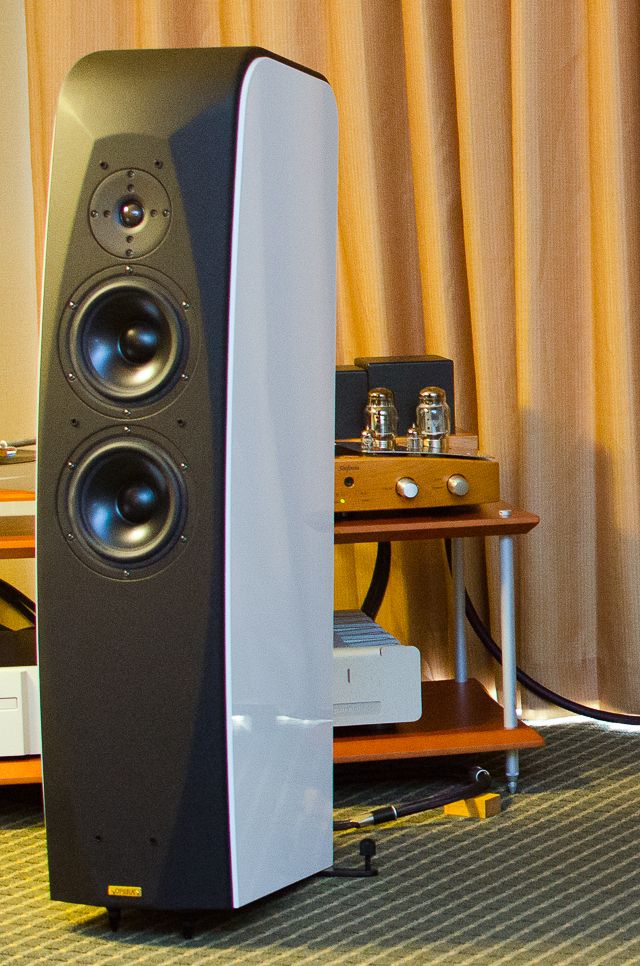
The Opera Seconda speakers ($6495 per pair) in white were the stars of this show by necessity. Colleen and Mark got to their room only to discover a complete lack of electricity near the front of their room, condemning the oh-so-pretty gear on their rack to an almost un-photographable corner. A Unison Research turntable ($4000) and PureAudio Vinyl phono preamp ($4500) were fronting the system from their hiding place while I was there, and power was delivered by a Unison Sinfonia integrated amp ($6495).
The sound was what I’ve come to expect from a CCI room — warm, detailed and engaging — but the Opera Speakers and PureAudio preamp added a dose of unexpectedly welcome dynamics to the show.
CCI keeps getting better at this.
Benchmark
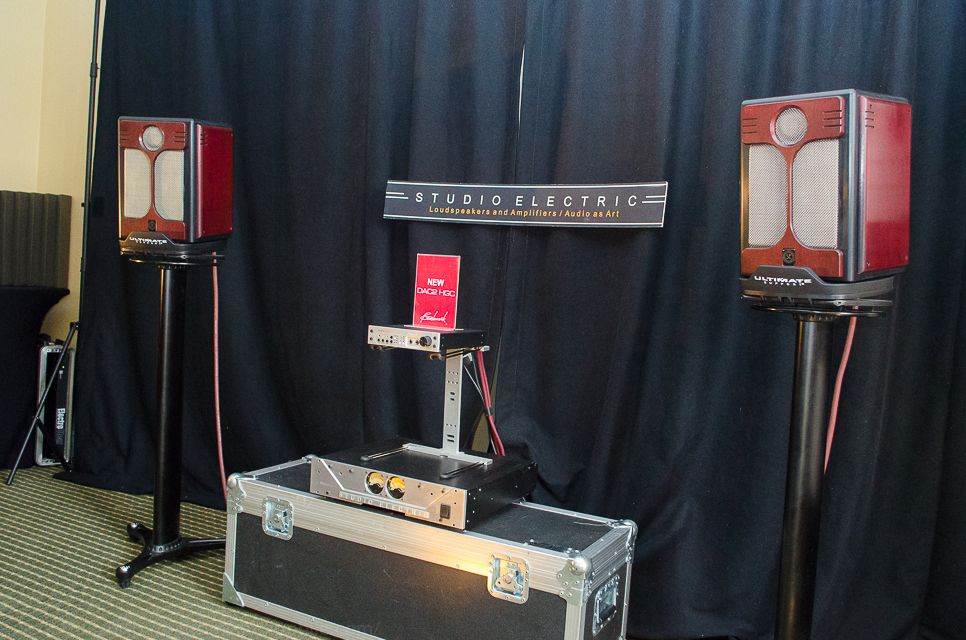
A Benchmark DAC2 HGC ($2000) fed Studio Electric EA4 hybrid amplifier ($7500) and Studio Electric Monitors ($2750 in Mahogany) in one of the easiest-to-move systems at the show. I’ve mentioned this before, but the Studio Electric sound keeps impressing me. This room was no exception. The shoebox monitors gave a strong taste of real dynamics while still excelling in all the traditional minimonitor ways.

Off to the side, on static display, was Studio Electric‘s new Monitor Basik ($2150 per pair), and reduced-bling and reduced-price version of the speakers they were playing. This is a brand that clearly knows how to make music, and they also seem to know how to keep my dog’s nose out of speaker cones.
–Mal Kenney





